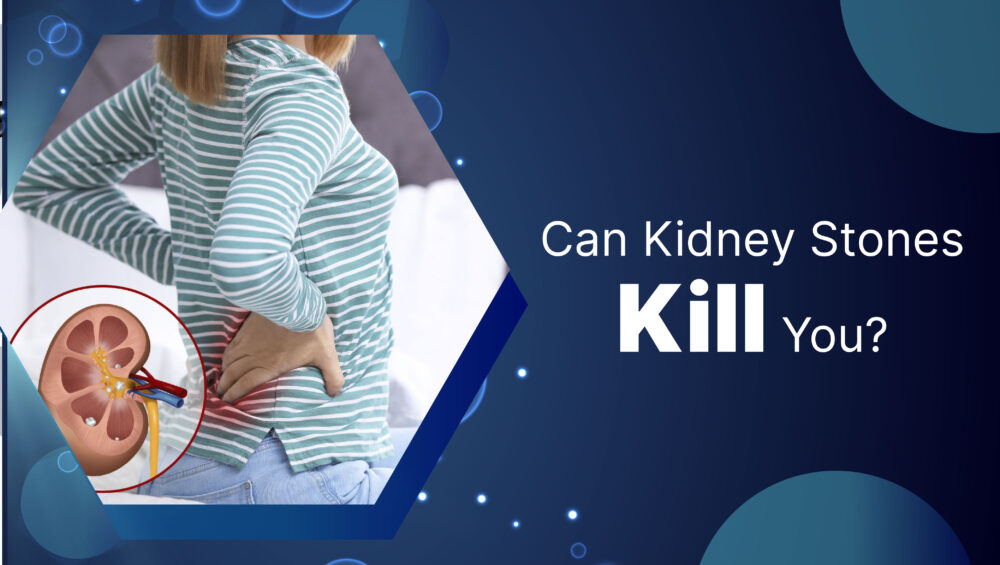The incidence of kidney stones is quite high with 1 out of 10 men all over the world experiencing one any time in their lives. They are mostly associated with much pain but not very often when it comes to life threatening risks. Dealing with the risk of kidney stones becoming dangerous, the people should seek medical help as soon as possible and the Dr. Deepanshu Gupta in Gurgaon is the chief man to get rescued.
What is Kidney Stones?
Kidney stones (also known as urolithiasis or nephrolithiasis) are mineral crystals which form up in the urinary tract. They include calcium oxalate, uric acid, struvite, or cystine and are available in different sizes which vary between small grains and golf ball-sized masses. Small ones might go unnoticed however bigger ones might cause blockages in excretion of urine and lead to severe problems .
Dangerousness of Kidney Stones
Majority of the kidney stones can be handled, provided they do not lead to:
- Obstruction: A ureter blockage involves accumulation of pressure and hydonephrosis, which can eventually result in kidney damage in the case of no treatment.
- Infection: Bacteria may live in stones resulting in UTI or kidney infections (pyelonephritis). In case infection reaches the blood, it may cause urosepsis- which is a medical emergency.
Sepsis- A Hidden Killer
The body’s overactive response to germs is called sepsis. Dissemination of bacteria in the urine will cause systemic response, organ failure, and shock as bacteria pass into the blood. Based on the latest systematic reviews, an estimated 16-30% accessions of all reported death related to kidney stone patients are procedure or infectious related deaths.
Clinically, it has been reported that patients with an infected urinary stone are at high risk of sepsis, especially when they are old, immunocompromised, or have large homogeneous renal stones.
In one reported case, a 31-year-old male patient presented with septic shock and acute kidney injury secondary to bilateral ureteral stone, which was fatal if not managed timely.
Real-World Examples
Mounting evidence and case reports indicate that even small stones — if not properly treated — can trigger sepsis. There was a case on reddit where a 2mm stone caused occlusion, blood sepsis, ICU stay and respiratory post-ICU for sepsis complications.
These stories emphasize that size doesn’t necessarily matter — a blockage plus infection can advance quickly.
Mortality Rates & Statistics
Between 1999–2013, 1954 deaths (approximately 130 per year) were recorded in West due to kidney stones.
Worldwide, there are an estimated 16,000 deaths per year from kidney stones. They are also wide spread in India and represent global prevalence at about 12 percent [3] and slightly more in the northern India side.
Death is commonly due to urosepsis or unrelieved obstruction in high risk patient or to procedural complication.
Risk Factors For Complications
Who is most vulnerable?
- Larger or multiple stones
- Obstructive urinary tract anatomy
- Diabetes, hypertension, or immunocompromised state
- Spinal cord injury or neurogenic bladder
- Low performance status or frailty on the elderly patient
- Sterile urine or stone cultures with signs of infection.
Untreated patients with VRE have a higher chance of developing a sepsis, AKI, or mortality.
Symptoms That Shouldn’t Be Ignored
Warning signs include:
- Sudden, high flanck pain that travels to the groin
- Blood in urine
- Fever, or rigors, or chills
- Less urine than normal or none at all (anuria) – an emergency care is required
- Loss of orientation, shortness or breathing, cold and clammy. ( sepsis)
- In both of these scenarios, urgent medical evaluation is essential.
- Prevention and Early Management
To Avoid Serious Outcomes
- Increase fluid intake:You should increase the amount of fluid intake especially 2-3 liters of fluid per day to reduce the amount of urine and the crystal formation of stones
- Improvement in diet and lifestyle: Minimization in salt and sugar intake, awareness about oxalate-rich food, intake of appropriate quantity of protein and no dehydration.
- Imaging & Labs: Scan, early ultrasound, urinalysis with culture to figure out whether there is occult obstruction or infection.
Management: Acute Urinary Obstruction
Management: RIRS, Shock Wave Lithotripsy, Ureteroscopy, and PCNL to relieve obstruction and get the stones out
Antibiotic Coverage: Treat UTI prior to procedures, Prophylactic antibiotics if indicated
Drainage in Emergencies: Relief by nephrostomy or stent to avert septica progression.
Can Kidney Stones Kill You?
Yes—but it’s rare. Left untreated, obstruction and infection may cause sepsis, multi-organ failure and death in high risk patients. However, these are largely preventable with early detection, effective treatment and specialist management.
When to See a Urologist?
- Repeated stone episodes
- Symptoms suggesting UTIs or obstruction
- Flank pain, chronic or changes in urination
- Known comorbidities such as diabates or kidney disease
- Strategizing future prevention to prevent recurrence
Your Expert in Gurgaon for Kidney Stone
For trusted medical assistance, consult with Dr. Deepanshu Gupta, best kidney stone specialist in Gurgaon; Delhi NCR. With 15 plus years of experience and 12,000 plus endoscopic surgeries, Dr. Gupta provides international level of care in urology at Indian rates. He sees patients for kidney stones, and also for an enlarged prostate (BPH), and male infertility and erectile dysfunction, which are treated with minimally invasive precision. Because it’s too late by then, and you could have saved your kidneys and your life by going for an early consultation. Book a call today!

